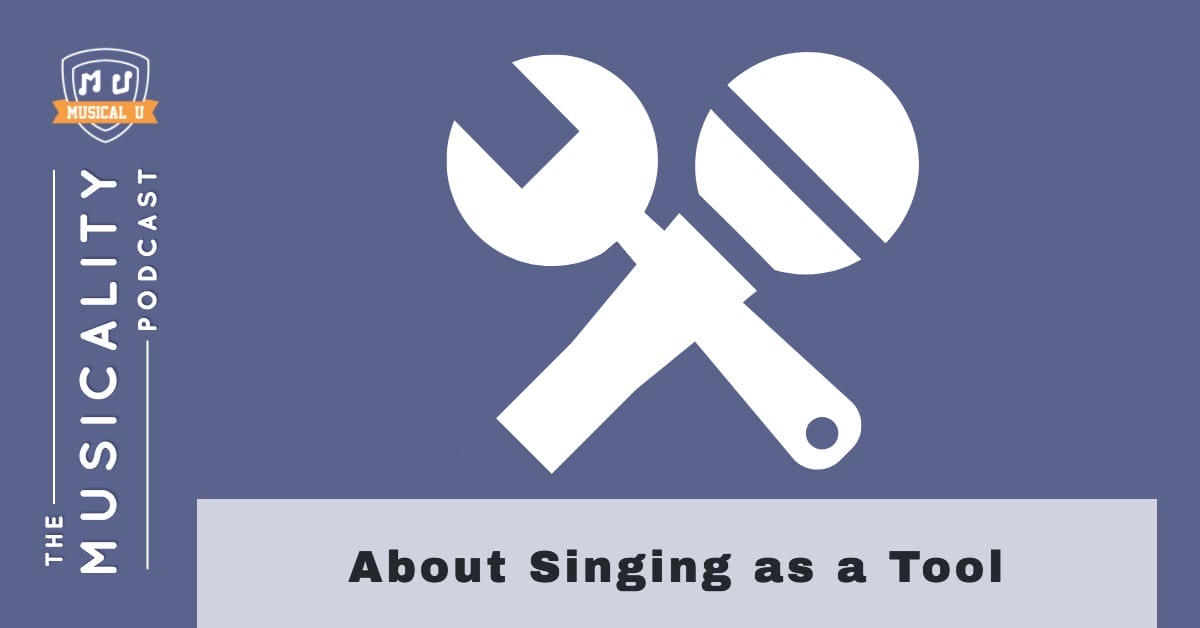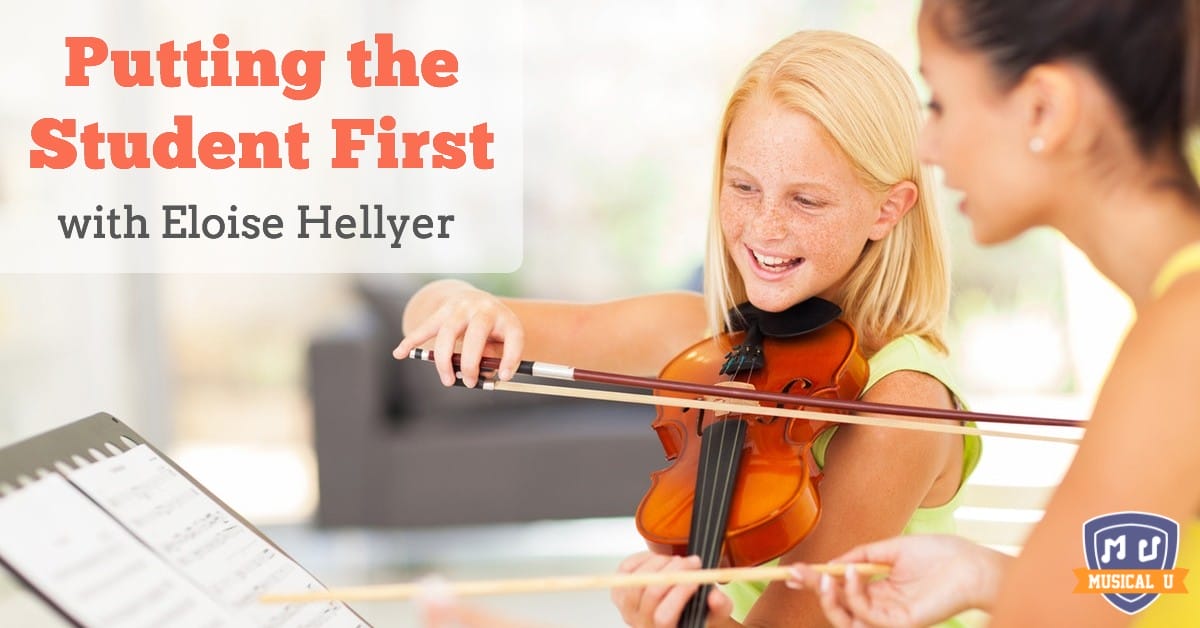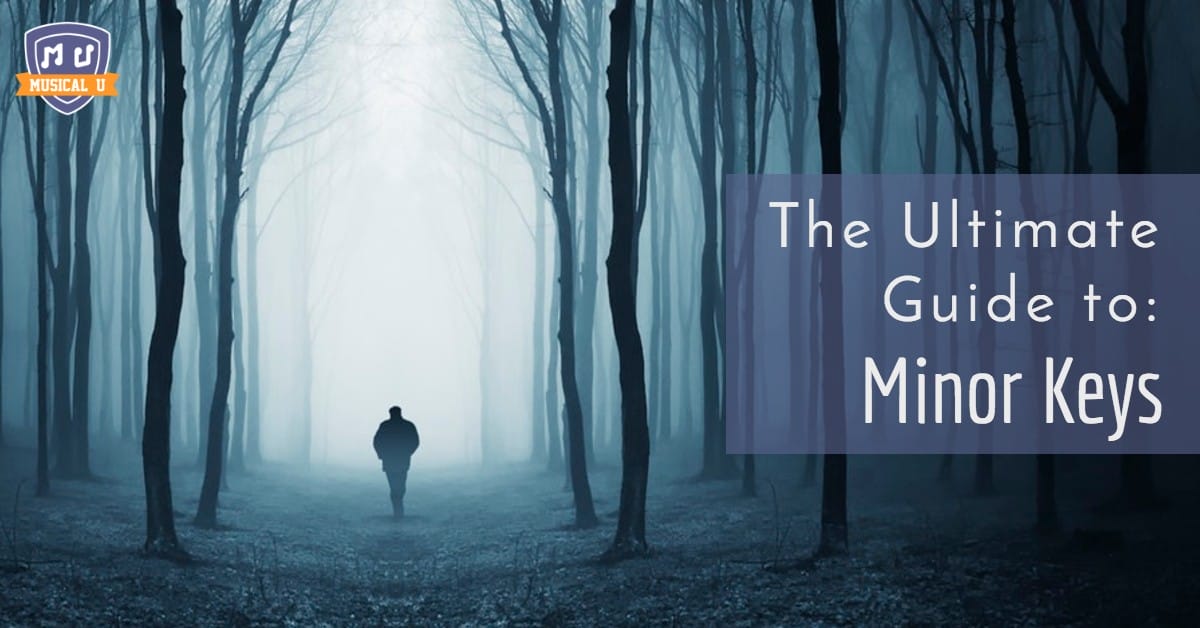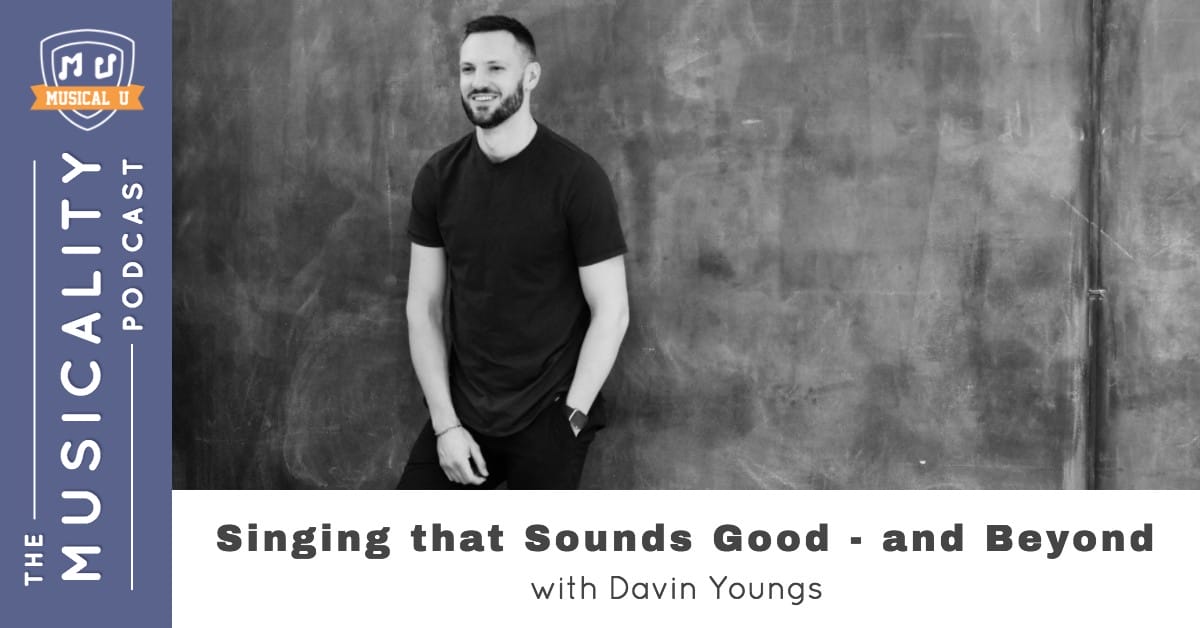https://www.musical-u.com/learn/box-yourself-into-creativity-5-tips-for-recording-and-songwriting/
Writing and recording music has never been easier 🖥 … and simultaneously more difficult. Sometimes you need to limit yourself to bring out the creativity that is inside you. Jason Dzamba has these suggestions on how to get past the technology and let your muse sing! https://www.musical-u.com/learn/box-yourself-into-creativity-5-tips-for-recording-and-songwriting/
Even if you haven’t touched that old instrument in decade…
https://www.musical-u.com/learn/how-i-resurrected-my-high-school-instrument/
Even if you haven’t touched that old instrument in decades, you can still pick it back up at any time. We hope that this story from Marisa inspires you to never stop being a musician! https://www.musical-u.com/learn/how-i-resurrected-my-high-school-instrument/
Starting a website can be overwhelming! What should be in…
https://www.musical-u.com/learn/the-5-most-important-aspects-of-a-modern-band-website/
Starting a website can be overwhelming! What should be included, and how do you do all that fancy programming? 💻 The team at Bandzoogle has outlined the 5 key elements to a band website to help you stand out on the web! ➡️ https://www.musical-u.com/learn/the-5-most-important-aspects-of-a-modern-band-website/
Singing for Non-Singers, Student-Centric Teaching, Diving into Minor, and Inspired Singing
When it comes to learning music, there are two broad categories of students: those that are largely self-taught, and those who are studying under a music teacher.
No matter which camp you fall into, this week, Musical U is bringing you content that will provide new insights for your learning journey that you and your teacher can use to enrich your lessons.
We speak to two music educators with two different yet equally incredible approaches to teaching – one a headstrong, dedicated violin teacher, the other a pragmatic vocal coach. Next, we introduce our easy-to-follow guide to learning and experimenting with minor keys. Finally, we explore why every musician out there (and not just vocalists!) should try their hand at singing to improve their musicianship.
Singing for Non-Singers
Repeat after us: singing is not just for singers!
It’s for anyone who plays an instrument and wishes to improve their pitch, ramp up their songwriting, or train their brain to audiate, which is the skill of being able to imagine music without hearing it.
 Another bonus: singing is one of the best ways to complement your ear training exercises, as you’ll be able imagine the intervals, scales, chords, and melodies in your head without having to use your instrument as a middleman!
Another bonus: singing is one of the best ways to complement your ear training exercises, as you’ll be able imagine the intervals, scales, chords, and melodies in your head without having to use your instrument as a middleman!
Head over to About Singing as a Tool to learn how you can begin honing this skill.
This podcast episode aimed to expand your idea of singing. As we saw, whether you are a singer or not, learning to sing can have many benefits for your overall growth as a musician. In addition to the benefits that were discussed in the podcast episode, singing out loud can also help you to remember your music in a new way. The Bulletproof Musician explores the science behind singing out loud.
A typical way of recalling intervals is to associate the interval with a song that you can easily remember. But Julian Bradley contends that this is not the most effective way of using your audiation skills to recall intervals. Instead, learn more about how you can use your singing voice for this purpose, and the steps you can take to build your musical ear.
So, we learned that singing is a great tool for developing many aspects of your musicality. Inspired by Music Ed Magic to “flip the classroom”, we decided to seek out more great tools for singers. If you are a singer, or want to become a better singer, learning the piano is one of the most useful things you can do – Piano Cub explains why!
Student-Centric Teaching
In teaching young children music, what is the most important goal for a music teacher?
Is it to get them playing at a professional level? Ensuring that the parents are getting their money’s worth? Making lessons fun?
It’s certainly not easy to know, especially when torn between uncooperative students and adamant parents.
 In Putting the Student First, with Eloise Hellyer, Eloise provides some unexpected and incredibly encouraging advice for teachers on how to put their own biases aside and engage in thoughtful self-reflection as educators in order to ensure that the needs and wants of their students are placed center-stage.
In Putting the Student First, with Eloise Hellyer, Eloise provides some unexpected and incredibly encouraging advice for teachers on how to put their own biases aside and engage in thoughtful self-reflection as educators in order to ensure that the needs and wants of their students are placed center-stage.
Eloise shared her inspiring story on how she approaches music education. Through her teaching, she has certainly had a lasting impact on the lives of her students. As a music teacher, you are always trying hone your art of teaching. Benedict Westenra has been an inspiration for our Musical U members, and we are thrilled to share his wonderful guide to becoming a better music teacher.
Many music teachers desire something outside of the traditional classroom and start their own studio of musicians. Like any business, starting a private music studio has its ups and downs, but many teachers find the experience very rewarding. Music Teacher’s Helper outlines the best practices in starting up your own private music studio.
No matter how long you have been teaching or learning music, it’s always refreshing to shake it up a bit with a new approach. Music Ed Magic explores the concept of “flipping” the music education classroom on their page. This practice is gaining popularity in public education and it’s easy to see why!
Diving into Minor
People often mistakenly pidgeonhole music written in minor keys as bleak, sad, and wistful.
Though many minor songs are indeed tearjerking ballads, minor music can evoke feelings such as dread, tension, fright, hope, and even… happiness!
 The richness and feeling that can be evoked by minor keys is well-worth an extensive exploration – and that’s exactly what we’re giving you in our Ultimate Guide to Minor Keys. In here, you’ll find everything from a step-by-step guide on building minor scales and chords, to popular examples of music that utilize minor in fascinating ways, to listening exercises to get your ear acquainted to minor in no time.
The richness and feeling that can be evoked by minor keys is well-worth an extensive exploration – and that’s exactly what we’re giving you in our Ultimate Guide to Minor Keys. In here, you’ll find everything from a step-by-step guide on building minor scales and chords, to popular examples of music that utilize minor in fascinating ways, to listening exercises to get your ear acquainted to minor in no time.
So many great scales and variations on these scales are part of our musical language! With three distinct minor scales, it can be difficult to know which scale you should use in your playing. Sean Wilson Piano explains why the melodic minor scale is a great choice for improvising over the ii-V-I progression.
Many of the world’s most iconic songs are written in minor keys. Minor keys allow musicians to express their emotions in colors that aren’t always present in major keys. Once you get the unique sound of minor keys in your musical ear, you may also feel the urge to write your own minor masterpiece. Sam Russell from Reason and Steel provides some insights that will help you along your way.
While some songwriters claim that they “only write what they feel”, most musicians understand the theory behind the chord progressions they are using. A topic that we are particularly passionate about here at Musical U is the Circle of Fifths. To learn more about how to approach songwriting with this master tool, The Singers Workshop has a guide specifically geared towards songwriters.
Inspired Singing
Continuing our singing-themed content this week is a special interview with Davin Youngs, founder of Davin Youngs Voice, Chicago Circle Singing, and the VOXUS Experience.
Davin combines a practical, step-by-step approach to teaching singing with an experience-focused, almost spiritual mindset that encourages maximum musical expression.
Head over to Singing that Sounds Good – and Beyond, with Davin Youngs to learn about his own long, winding music journey, the breakthroughs he had while learning to sing, and his take on why you’re never too old to start singing!
Davin was such an inspiration to speak with! Hearing the way that he gets people to truly love singing is the hallmark of a great teacher… and creates passionate singers! We aren’t all so lucky to have a teacher like Davin available, but fortunately, Total Vocal Freedom has compiled six ways that you can enjoy singing just as much as Davin’s students do.
One of the biggest learning points for Davin was understanding that vocalists need to develop a mix of chest and head voice if they want to be versatile. Wait… chest and head voice? What exactly does that mean? Phil Moufarrege, a talented vocal coach, explains what a mixed voice is and how you can work to develop it.
When we think about improvisation, we typically think of a jazz guitar player, pianist, or saxophone player. But any musician can learn to improvise (even without playing jazz!). To incorporate vocal improvisation into singing groups, you may want to get some advice from the experts – here’s a fantastic guide from Chris Rowbury.
Enriching your Learning
Whether you’re your own music teacher or are learning from a pro, we hope that this week’s content inspires you to enrich your musicality – for example, by learning to sing and incorporating minor keys into your playing.
Or maybe you’d like to take a page out of Davin or Eloise’s books, and suggest some of their methods to your music teacher to try out together!
In order to get the most out of your music training (whether self-administered or not), it’s a great idea to reflect on what you’re learning, how you’re learning it, and where it fits within the larger puzzle of your musical goals.
The post Singing for Non-Singers, Student-Centric Teaching, Diving into Minor, and Inspired Singing appeared first on Musical U.
You can learn to sing in tune! 🎤 We’ve compiled the 4 key…
https://www.musical-u.com/learn/four-steps-to-sing-in-tune-infographic/
You can learn to sing in tune! 🎤 We’ve compiled the 4 key steps from the Musical U guide to singing in tune into an infographic for quick reference 😎 https://www.musical-u.com/learn/four-steps-to-sing-in-tune-infographic/
A major decision that many musicians make is selecting a …
https://www.musical-u.com/learn/majoring-in-music-choosing-a-school-thats-right-for-you/
A major decision that many musicians make is selecting a music school. With so many great choices, how can you find the one that is right for you? MajoringInMusic.com has these suggestions that will put you on the right path. https://www.musical-u.com/learn/majoring-in-music-choosing-a-school-thats-right-for-you/
Have just 5 minutes to spare? What if you could learn eve…
https://www.musical-u.com/learn/5-minute-guide-to-interval-ear-training/
Have just 5 minutes to spare? What if you could learn everything you need to know about intervals in a couple of minutes? 🎉 The clock starts…. Now! ⏰ https://www.musical-u.com/learn/5-minute-guide-to-interval-ear-training/
About Singing as a Tool
Many musicians shy away from singing. They think that they don’t need it, or that it serves no purpose for them. In fact, nothing could be further from the truth – regardless of what instrument you play, learning to sing will improve your audiation skills, and allow you to express musical ideas in a new way, write songs without needing to hash out the exact melody on your instrument, and fine-tune your sense of pitch.
Listen to the episode:
Links and Resources
- Interview: Davin Youngs
- Interview: Brent Vaartstra
- Interview: George Bevan
- Learning to Sing in Tune
- Why Every Musician Should Sing
- Learn to Sing with Musical U
Enjoying The Musicality Podcast? Please support the show by rating and reviewing it!
Transcript
After our recent episode with Davin Youngs I thought I’d do an episode about the benefits of singing. But then I changed my mind.
He talked about how wonderful it feels to sing in a group and how emotionally uplifting it can be and how it helps you connect with your own authentic voice. And so I was going to do a followup episode on how singing is so much fun and all the benefits it brings.
And it is fun. And it does bring an amazing range of physical and emotional benefits, whether you’re singing solo or especially in a group. And I think we will do an episode about that in future.
But here’s the thing. I think a lot of you listening do not consider yourselves singers, you’re musicians of all different kinds. And while the fun and the benefits are great and will definitely keep you singing once you get going, I just wasn’t convinced that it would be enough to get you to try it out for yourself.
I realised that actually the point I really wanted to share with you and what might encourage you to give singing a try was the very practical, very useful impact of adding singing to your toolkit as a musician – whether or not you ever decide to get up on stage or join a choir.
How singing is a tool that any musician should be able to use. And it doesn’t take long to master the basics enough for it to be this tool for you.
If you’re listening and thinking “Sure, but I can’t actually sing” then please don’t tune out. Check out our previous episode with George Bevan for clear evidence that even those who think they are “tone deaf” can learn to sing, and we’ll have a link in the shownotes to a guide we’ve written that explains how to do it.
So first let’s define what we’re talking about.
We are not talking about developing an incredible, versatile, knock-your-socks-off ability to sing.
We are not talking about you declaring yourself “a singer” and fronting a band or joining a choir.
What we’re talking about is simply getting to the stage where if you want to sing a certain note or sequence of notes, they’re going to come out clearly and on the right pitches.
That alone is enough to make singing a powerful tool for you. And to give you some idea, with the way we teach it at Musical U you’re looking at maybe a few weeks of practice to get to this level – it doesn’t take long.
Singing as a Tool
So what’s the value of getting to that level of singing ability if you’re not looking to perform as a singer?
There are a bunch of benefits – but the short and simple answer is that it is a way to bring musical ideas from your head out into the world, without the added complication of finding the right notes on an instrument.
If you don’t have singing as a tool then it can feel like there’s a big gulf between hearing something or imagining it in your mind’s ear – and then playing it on your instrument. With singing, you’re able to bridge that gap or remove the need for the instrument step entirely.
Let’s go through some specific benefits and applications of singing as a tool.
Better sense of pitch
First off, learning to sing in tune is one of the best ways to train your sense of pitch. Singing in tune requires two major components: controlling your vocal pitch – but also being able to very clearly and accurately hear and imagine the pitch you’re actually aiming for.
So as you learn to sing in tune you train your ears to hear better whether notes are sharp or flat or perfectly on-pitch. This is something that you might never have had to do before, depending on the instrument you play – and it’s such a fundamental skill you absolutely do not want to overlook it.
You can do “pure” ear training exercises to hone your pitch accuracy too, but learning to sing in tune is an easy, natural and useful way to do it.
Better Audiation
As well as this “real world” pitch training you’re also training your mind’s ear – your ability to audiate, meaning imagine music, with accurate pitch.
In a recent episode we talked about Active Listening, and how it helps you improve your audiation and more vividly remember or create music in your head. Learning to sing in tune similarly develops the accuracy with which you can pitch notes in your mind.
Easier Ear Training
Singing is also an enormous help for ear training. This is something we really emphasise at Musical U and it also came up in our past episode with Brent Vaartstra of Learn Jazz Standards – that when you use your voice as part of ear training exercises you can progress a lot faster.
There are a few specific ways it helps:
- As mentioned before, learning to sing also helps you sing “in your mind”, and that means when you’re trying to do ear training exercises and recognise notes, chords, and so on, you have a more powerful musical imagination to bring to the task.
- Singing also gives you a way to experiment out loud when trying to do ear training tasks. For example if you’re trying to recognise an interval you might sing the start of a reference song to see if it matches up. If you’re trying to recognise a chord progression you might sing along with the root notes of the chords, the bassline, to see how those pitches compare and that can reveal the chords being used.You can also do some nifty vocal acrobatics, for example if you’re trying to identify a harmonic interval, meaning two notes played at once – being able to sing those two notes back individually transforms it into an ascending or descending interval that you might find it easier to recognise. In time as you get better you’ll probably do these things in your head or skip them entirely, but while you’re learning it’s really helpful to be able to experiment out loud by singing.
- The third way singing can help with ear training is by really testing whether you heard what you think you heard. In a lot of cases I would say that if you can’t sing back what you heard, then you haven’t really understood it by ear. One example would be recognising a chord as major or minor. You can listen for the overall sound of the chord – but that’s prone to mistakes, especially in a musical context, and gets harder as you try more ambitious chords like seventh or extended chords. If you’re able to sing back each note of the chord that both tests that you truly heard what was going on, and gives you a clear set of notes to explore and evaluate to identify the chord type, for example identifying the solfa name of each note or the intervals between them.If you find yourself struggling with a pitch-related ear training task, the chances are that you aren’t actually hearing clearly enough yet to be able to sing back each of the notes you’re listening to. Once you practice that and use singing as a tool in this way the actual task tends to become much easier.
The next couple of benefits of using singing as a tool have to do with creativity.
Easier and Freer Experimentation
The first is that singing enables easier and freer experimentation and creation in music. Yes, you can sit with an instrument and noodle around with scales or patterns and try to create something. But that’s both more complicated and more limiting compared with doing it with your voice.
Your singing voice is the most direct path to bring musical ideas you imagine into the world. You have total freedom of pitch so you’re not trapped in memorised patterns or what happens to work well or match your level of instrument technique. And you can immediately express what you want to, and then analyse it after to translate it to an instrument or write it down.
As we talked about with Davin on the last episode, singing is the most natural and direct form of musical expression available to us – it may seem intimidating at the outset but once you break past that little barrier it’s enormously natural and liberating to be able to create music with your voice.
Easier Communication
The final benefit of singing as a tool that I wanted to touch on was communication. Being able to express musical ideas with your voice isn’t just helpful for private creation by yourself. It’s also hugely helpful if you’re collaborating with other musicians.
If you don’t feel able to express your ideas with your voice it can feel very frustrating in a band or other group to have to try to translate what you’re thinking onto your instrument before you can communicate it. If you can just quickly and easily sing the idea you have in mind, you skip all the instrument specifics and complications and can bounce ideas back and forth immediately and directly.
Add singing to your musical toolkit
So this was meant to be a quick five minute episode but it turns out there’s a lot to say! And I definitely haven’t close to covered all the benefits that come from getting a basic level of singing ability under your belt.
So if you’re feeling inspired, please go ahead and take the next step.
At Musical U we specialise in helping people go from zero to being able to sing confidently and reliably in tune, we have a dedicated Roadmap to show you the way. There’ll be a link to that in the shownotes, and we would love to help you make singing a valuable tool in your musical life.
We’ll also have a link in the shownotes to our free guide so that if you’re not ready to join Musical U yet there’s still some easy next steps to get you on your singing journey.
If you’ve felt limited in how you can express your musical ideas, or you’ve found ear training challenging, or you’ve wanted to know that if the need arises you can absolutely sing simple things and sound good, then I hope this episode has encouraged you to add singing to your musical toolkit!
The post About Singing as a Tool appeared first on Musical U.
Many Musical U readers have already started their musical…
https://www.musical-u.com/learn/7-ways-accelerate-ear-training/
Many Musical U readers have already started their musical journey, but are frustrated by slow progress. Does this sound like you? To accelerate your ear training, the Musical U team has these 7 tips to move faster to your goals. https://www.musical-u.com/learn/7-ways-accelerate-ear-training/
Starting to learn a new skill can be over-whelming. There…
https://www.musical-u.com/learn/start-ear-training/
Starting to learn a new skill can be over-whelming. There are hundreds and books and blogs about how to train your musical ear. But how should you really get started? https://www.musical-u.com/learn/start-ear-training/
